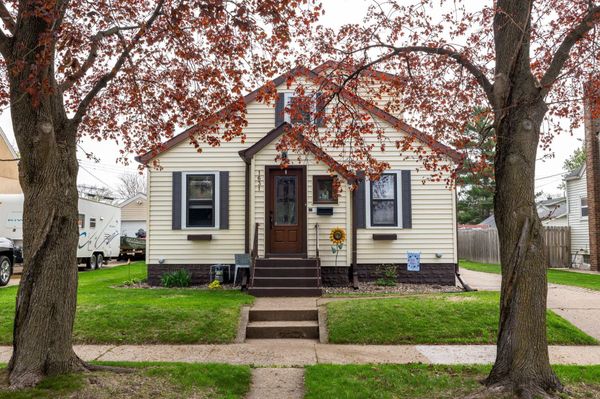A property bridging loan serves as a short-term financial tool. It facilitates scenarios like purchasing a new property before selling an existing one, financing auction property acquisitions, funding renovation projects, and resolving cash flow challenges.
Although it offers versatility, it's vital to recognize that property bridging loans entail inherent risks, costs, and specific conditions. These loans are indispensable in real estate ventures, but they necessitate a comprehensive understanding and thoughtful evaluation of their implications.
This guide delves into the realm of property bridging finance, elucidating its advantages, risks, and crucial considerations. It will ensure you make informed decisions when navigating the property market. So, let’s get into it without further delay!
Exploring Property Bridging Finance At A Glance
Property bridging finance, also known as a bridging loan, serves as a short-term financial solution for property sellers or buyers.
It is designed to provide the necessary funds for acquiring a new property when the sale of your existing property is pending.
These loans prove invaluable when property transactions are misaligned in terms of timing. Here's a glimpse of how they function:
New Property Acquisition:
Imagine finding your dream home or a lucrative investment property, but the sale of your current property hasn't closed yet.
Bridging Loan Application:
To address this gap, you apply for a property bridging loan secured against your existing property, which is currently on the market. Lenders evaluate your property's value, your repayment capability, and the anticipated sale price.
New Property Purchase:
With the loan secured, you can promptly proceed with the purchase of your new property.
Current Property Sale:
Once your current property is successfully sold, the proceeds are utilized to repay the bridging loan.
The Advantages of Property Bridging Loans
Property bridging loans present several merits:
Swift Fund Accessibility:
These loans prioritize speed, making them an ideal choice when you need funds quickly to secure a new property.
No Waiting on Property Sale:
You aren't compelled to delay your property purchase until your current property is sold, a particularly advantageous feature in competitive markets.
Flexible Repayment Alternatives:
Many lenders offer adaptable repayment terms, including the option to settle the loan in full once your existing property is off the market.
Interest Payment Flexibility:
Certain bridging loans allow you to defer interest payments until the loan term concludes, alleviating the burden of monthly interest installments.
Navigating The Risks Of Property Bridging Loan
Property bridging loans offer valuable solutions but require a careful evaluation of associated risks and costs:
Elevated Interest Rates:
Bridging loans often feature higher interest rates due to their shorter terms and increased lender risk.
Potential Dual Mortgage Burden:
In cases where the sale of your current property takes longer than expected, you may find yourself managing two mortgages simultaneously.
Additional Loan Expenses:
Beyond interest rates, you should be prepared for supplementary charges, including arrangement and legal fees.
Market Volatility:
Property markets are renowned for their unpredictability, and fluctuations in your existing property's value or the new property's purchase price can impact your financial situation.
Clear Exit Strategy:
A well-defined exit strategy is imperative for loan repayment, typically involving the sale of your current property. Be ready with a backup plan if it doesn't sell as anticipated in terms of price or timing.
Things to Consider Before Taking Out a Property Bridging Loan
Before diving into the world of property bridging loans, there are several critical factors to keep in mind, to ensure you make an informed decision:
Loan Amount:
Begin by calculating the exact amount you need and perform a thorough assessment of your ability to comfortably repay it. The average bridging loan size is around £700,000 in the UK.
While doing so, take into account all the associated costs, which include interest charges, fees, and potential penalties.
Sale Timeline:
Gain a realistic understanding of how long it might take to sell your current property. The time to sell your property can vary; around 65 days is the average for residential sales in the UK.
Collaborate with real estate experts to evaluate prevailing market conditions and trends that could impact the sale.
Interest Rates:
Be vigilant in your quest for the most favorable interest rates and loan terms. Comparing various lenders and their loan products is crucial to secure the most competitive offer. Bridging loan rates typically range from 0.45% to 1.5% per month.
Financial Stability:
Ensure your financial stability is rock-solid, capable of managing the potential burden of handling two mortgages simultaneously if your property doesn't sell promptly.
Having a financial safety net is paramount. UK homeowners hold an average of £124,000 in savings.
Loan Terms and Conditions:
Thoroughly review the terms and conditions of the bridging loan. Some lenders may charge 1% as a monthly default interest rate.
Beware of any hidden fees or penalties, especially those associated with early repayment or refinancing.
Lender Reputation:
Prioritize researching the reputation of the lender you're considering. Look for reputable lenders, like Shawbrook, MT Finance, or Octane Capital, that have established credibility in the market.
Read reviews, verify industry accreditations, and request recommendations from trusted sources if possible.
Repayment Terms:
Property bridging loans have short repayment terms, usually spanning weeks to months. Bridging loans usually have a 12-month term, but they can vary. Plan a clear exit strategy, accounting for potential setbacks like slow property sales.
Affordability:
These loans can be costly and risky. Ensure your financial stability by managing interest payments and the full loan amount.
Assess your financial capacity; for example, a £100,000 loan can accumulate £1,250 in monthly interest. Consider its impact on cash flow, credit, and taxes. Seek professional advice.
Explore Alternatives:
Investigate other financing options like mortgages, home equity loans, personal loans, or joint ventures. Remortgaging comes with an average UK mortgage interest rate of 2.2%.
Carefully weigh their pros and cons, and consider delaying your purchase until the existing property sells or the projects are complete.
Legal and Financial Obligations:
Understand the full extent of your legal and financial obligations when opting for a bridging loan. This encompasses the terms of repayment and the property provided as collateral.
Ensure complete clarity regarding your responsibilities. For instance, a valuation fee might be around £300.
Seek Professional Advice:
Don't hesitate to seek guidance from a financial advisor or mortgage broker. Consult financial advisors who charge approximately £150-£350 per hour in the UK.
They possess the expertise to guide you through the complexities of property bridging finance, ultimately helping you find the optimal solution for your unique situation.
FAQs
How do I secure a property bridging loan?
Property bridging loans are typically secured against the property you're selling. The lender will assess the value of your current property and your ability to repay the loan.
Can I use a property bridging loan for renovations or property development?
Yes, you can use property bridging loans for property renovations and development, as they provide quick access to funds needed for such projects.
How do I find the best lender for a property bridging loan?
To find the best lender, it's essential to shop around and compare loan terms, interest rates, and fees. Finbri is one of the best property bridging finance lenders in the UK, where you can get loans ranging from 26K to 260M with rapid funding within a single day.
Conclusion
Property bridging loans serve as a useful tool in certain property deals, but they come with potential risks. To safely navigate these loans, it's vital to comprehend their intricacies, formulate a solid plan, and consult experts when needed. Keep in mind that while bridging finance can connect you to your new property, it's imperative to avoid financial pitfalls on that bridge.






